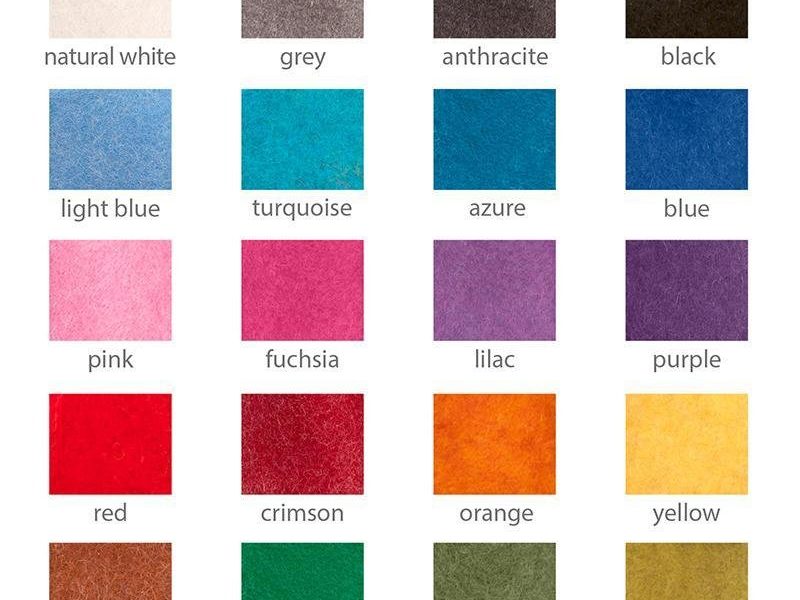Wool comes in a wide range of colors, from the natural off-whites and browns to vivid, dyed hues. The color of wool depends on the breed of sheep it comes from and the dyeing process used. So, what color is wool exactly? Let’s dive into the fascinating world of wool and explore the myriad colors it can exhibit. Whether you’re curious about the earthy tones of undyed wool or the vibrant palette of dyed fibers, there’s a color of wool to suit every taste and project. Let’s unravel the colorful tapestry of wool together.
Exploring the Question: What Color is Wool?
Welcome, curious minds! Today, we embark on an exciting journey into the colorful world of wool. Have you ever wondered about the different shades and hues that wool can come in? Join me as we unravel the mystery of what color wool truly is!
Understanding the Natural Color of Wool
Let’s start by exploring the natural color of wool. Wool, which comes from the fleece of sheep, can vary in color depending on the breed of the sheep. Sheep can be found in a range of natural colors, including white, black, brown, gray, and even shades of red and cream.
Among the most common natural colors of wool are white and shades of off-white. This is because many sheep breeds produce wool that is naturally white or light in color. However, there are also breeds that yield wool in darker hues such as black or brown.
Factors Influencing Wool Color
Several factors influence the color of wool produced by sheep. One of the primary factors is genetics. Just like how humans inherit eye or hair color from their parents, sheep inherit the color of their wool from their ancestors. Breeders carefully select sheep with desired wool colors to maintain or enhance specific hues.
Moreover, environmental factors also play a role in determining wool color. The amount of sunlight, climate conditions, and even the diet of the sheep can affect the color of their wool. For example, sheep living in sunny regions may have lighter wool due to sun exposure, while those in colder areas might have darker wool to absorb more heat.
The Dyeing Process
While natural wool colors are beautiful, humans have been dyeing wool for centuries to create a vast array of vibrant shades. The dyeing process involves using natural or synthetic dyes to change the color of the wool fibers.
Natural dyes are derived from plant sources, insects, or minerals, and they have been used for thousands of years to color wool. For example, indigo plants can produce a deep blue dye, while madder root can create shades of red. On the other hand, synthetic dyes offer a wider range of colors and are commonly used in modern textile industries.
The Art of Wool Dyeing
Wool dyeing is a fascinating art form that requires skill and creativity. Artisans carefully prepare the dye baths, submerge the wool fibers, and apply various techniques to achieve unique color effects. From solid colors to intricate patterns, the possibilities are endless when it comes to dyeing wool.
One popular method of dyeing wool is called hand-painting, where artists apply dyes directly onto the wool to create beautiful, handcrafted designs. Another technique, called dip-dyeing, involves immersing the wool into different colored dye baths to achieve gradient effects.
The Influence of Fashion and Trends
Colors play a significant role in the world of fashion, and wool is no exception. Fashion designers often draw inspiration from nature, art, and current trends to create stunning collections that showcase a wide range of colors and patterns.
Each season brings new color trends for wool garments, from rich earth tones in the fall to pastel hues in the spring. Whether it’s a cozy sweater in a classic neutral shade or a bold statement piece in a vibrant color, wool can be dyed to match any fashion trend.
Sustainable Dyeing Practices
With growing concerns about environmental sustainability, many textile industries are embracing eco-friendly dyeing practices. Natural dyes derived from plants or insects are renewable resources that have minimal impact on the environment.
Furthermore, some companies are exploring innovative dyeing techniques that reduce water consumption and chemical waste. By adopting sustainable practices, the wool industry can minimize its carbon footprint and contribute to a cleaner, greener future.
Conclusion: The Kaleidoscope of Wool Colors
In conclusion, the question “What color is wool?” opens up a world of possibilities and creativity. From the natural hues of sheep’s fleece to the vibrant shades achieved through dyeing, wool comes in a kaleidoscope of colors that delight the senses and inspire imagination.
Whether you prefer the timeless elegance of natural wool colors or the bold statements of dyed wool garments, one thing is certain: wool is a versatile and timeless material that continues to captivate us with its endless color possibilities.
So, the next time you see a cozy wool sweater or a colorful hand-knit scarf, take a moment to appreciate the beauty and diversity of wool colors. Who knew that a simple question about color could lead us on such a colorful adventure?
Thank you for joining me on this exploration of wool colors. Stay curious, stay creative, and keep embracing the colorful world around you!
How to switch colors while crocheting #crochet #temperatureblanket
Frequently Asked Questions
What colors can wool be found in?
Wool can be found in a wide range of natural colors such as white, cream, brown, black, and grey. Additionally, wool can be dyed into almost any color imaginable, providing endless possibilities for creativity and design.
Are there any unique or rare colors of wool available?
Yes, some sheep produce wool in unique or rare colors such as silver, charcoal, honey, and even shades of red or blue. These colors can vary depending on the breed of sheep and their genetic predispositions.
Can wool be dyed to achieve specific colors?
Yes, wool is highly receptive to dyes and can be easily dyed to achieve a wide spectrum of colors. Professional dyeing processes enable wool to be transformed into vibrant and custom colors to suit the desired application or fashion trends.
Final Thoughts
Wool can come in a variety of colors, ranging from white and cream to gray and black. The natural color of wool is determined by the breed of the sheep. Additionally, wool can also be dyed to achieve vibrant and unique colors. In conclusion, what color is wool varies depending on the type of sheep and whether it has been dyed.




